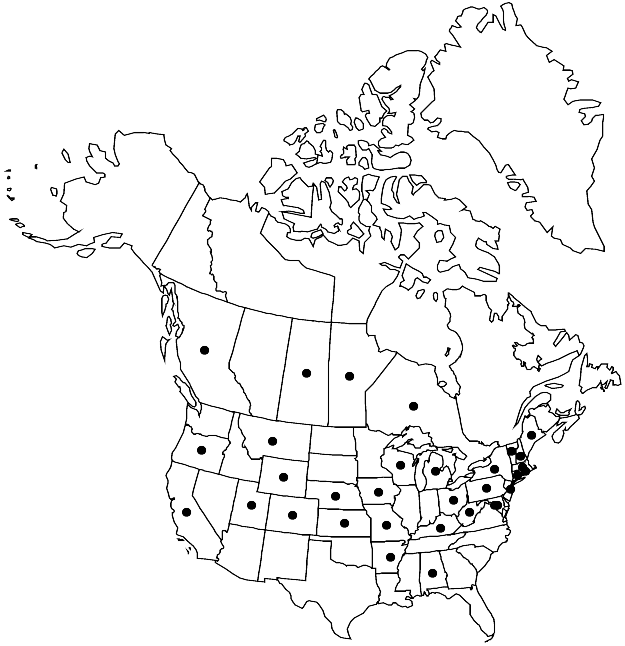Difference between revisions of "Reseda lutea"
Sp. Pl. 1: 449. 1753.
FNA>Volume Importer |
imported>Volume Importer |
||
| (6 intermediate revisions by 2 users not shown) | |||
| Line 8: | Line 8: | ||
}} | }} | ||
|common_names=Yellow or wild or cutleaf mignonette | |common_names=Yellow or wild or cutleaf mignonette | ||
| + | |special_status={{Treatment/ID/Special_status | ||
| + | |code=W | ||
| + | |label=Weedy | ||
| + | }}{{Treatment/ID/Special_status | ||
| + | |code=I | ||
| + | |label=Introduced | ||
| + | }} | ||
|basionyms= | |basionyms= | ||
|synonyms= | |synonyms= | ||
| Line 24: | Line 31: | ||
|elevation=0-1500 (-2500) m | |elevation=0-1500 (-2500) m | ||
|distribution=B.C.;Man.;Ont.;Sask.;Ala.;Ark.;Calif.;Colo.;Conn.;D.C.;Iowa;Kans.;Ky.;Maine;Md.;Mass.;Mich.;Mo.;Mont.;Nebr.;N.H.;N.J.;N.Y.;Ohio;Oreg.;Pa.;R.I.;Utah;Vt.;W.Va.;Wis.;Wyo.;Europe;sw Asia;n Africa;introduced also in South America;c Asia;s Africa;Australia. | |distribution=B.C.;Man.;Ont.;Sask.;Ala.;Ark.;Calif.;Colo.;Conn.;D.C.;Iowa;Kans.;Ky.;Maine;Md.;Mass.;Mich.;Mo.;Mont.;Nebr.;N.H.;N.J.;N.Y.;Ohio;Oreg.;Pa.;R.I.;Utah;Vt.;W.Va.;Wis.;Wyo.;Europe;sw Asia;n Africa;introduced also in South America;c Asia;s Africa;Australia. | ||
| − | |discussion=<p>In Australia, Reseda lutea is considered an invasive introduction that causes damage to crops; research is being carried on for means to control its expansion. It has been used as a dye plant, to a lesser extent than R. luteola. It has been found to have antibacterial activity against some pathogens. There is also potential utility for phytoremediation in soils contaminated with copper.</p> | + | |introduced=true |
| + | |discussion=<p>In Australia, <i>Reseda lutea</i> is considered an invasive introduction that causes damage to crops; research is being carried on for means to control its expansion. It has been used as a dye plant, to a lesser extent than <i>R. luteola</i>. It has been found to have antibacterial activity against some pathogens. There is also potential utility for phytoremediation in soils contaminated with copper.</p> | ||
|tables= | |tables= | ||
|references={{Treatment/Reference | |references={{Treatment/Reference | ||
| Line 36: | Line 44: | ||
-->{{#Taxon: | -->{{#Taxon: | ||
name=Reseda lutea | name=Reseda lutea | ||
| − | |||
|authority=Linnaeus | |authority=Linnaeus | ||
|rank=species | |rank=species | ||
| Line 51: | Line 58: | ||
|publication title=Sp. Pl. | |publication title=Sp. Pl. | ||
|publication year=1753 | |publication year=1753 | ||
| − | |special status= | + | |special status=Weedy;Introduced |
| − | |source xml=https:// | + | |source xml=https://bitbucket.org/aafc-mbb/fna-data-curation/src/2e0870ddd59836b60bcf96646a41e87ea5a5943a/coarse_grained_fna_xml/V7/V7_247.xml |
|genus=Reseda | |genus=Reseda | ||
|species=Reseda lutea | |species=Reseda lutea | ||
Latest revision as of 22:32, 5 November 2020
Plants annual or perennial, 30–80 cm, glabrous, papillose-scabrid, or hirtellous. Stems erect or ascendent, branched. Leaves: blade obovate, 4–10 × 1–2.5 cm, margins entire or ternately to biternately lobed (lobes 1–3 pairs, narrow-oblong or lanceolate-linear, margins flat or repand), surfaces scabrous or glabrous. Racemes 10–20(–50) cm; bracts caducous, oblong-linear, 2–4 mm. Pedicels 3–7 mm. Flowers (rarely polygamous); sepals persistent or tardily deciduous, (5–)6, not reflexed in fruit, linear-oblong, 3–4 mm; petals (5–)6, yellow, 2–5 mm, rounded-clawed, adaxial ones trisect, lateral lobes semilunate or falcate, margins entire or incised; stamens (12–)14–18; filaments deciduous, 1.5–3 mm, scabrid-papillose; intrastaminal nectary-discs pilose; anthers 0.9–1.5 mm; placenta entire. Capsules usually erect, 3-carpelled, cylindric or ovoid to subglobose, 7–15 × 4–6 mm, apically 3-toothed, glabrous or papillose, ribs scabrid. Seeds 1.4–2 mm, glossy, smooth (carunculate). 2n = 48.
Phenology: Flowering (Apr-)May–Sep.
Habitat: Grasslands, pastures, gravelly or shaley slopes, railroads, roadsides, mortared crevices in stone walls, disturbed areas, ballast ground, agricultural fields, usually on basic soils
Elevation: 0-1500 (-2500) m
Distribution

Introduced; B.C., Man., Ont., Sask., Ala., Ark., Calif., Colo., Conn., D.C., Iowa, Kans., Ky., Maine, Md., Mass., Mich., Mo., Mont., Nebr., N.H., N.J., N.Y., Ohio, Oreg., Pa., R.I., Utah, Vt., W.Va., Wis., Wyo., Europe, sw Asia, n Africa, introduced also in South America, c Asia, s Africa, Australia.
Discussion
In Australia, Reseda lutea is considered an invasive introduction that causes damage to crops; research is being carried on for means to control its expansion. It has been used as a dye plant, to a lesser extent than R. luteola. It has been found to have antibacterial activity against some pathogens. There is also potential utility for phytoremediation in soils contaminated with copper.